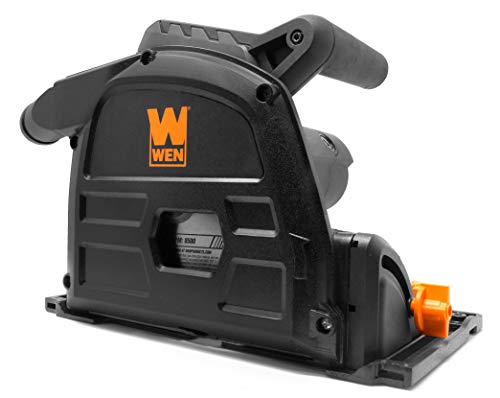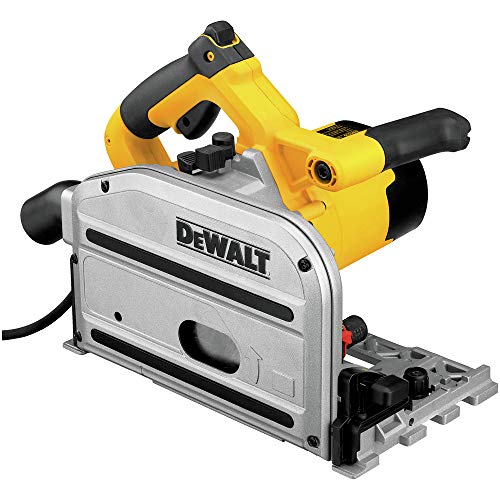When it comes to making precise, straight cuts in wood, nothing matches the accuracy and efficiency of a track saw. These tools have become a staple for both professional carpenters and serious DIYers who demand clean results without the bulk of a table saw. But here’s the challenge—how do you know which model truly delivers? That’s where our guide to the 10 Best Track Saws for Woodworking in 2025 comes in. We’ve analyzed real user insights to highlight performance, durability, and value. And if you’re setting up your workshop, you may also want to check out the best saw horses for stability or explore the best electric pole saws for tree trimming for outdoor projects. Ready to see how today’s best saws stack up? Let’s dive in.
Top pick
Best Precision: Festool 577014 Plunge-Cut Track Saw TS 55 FEQ-F-Plus-FS
Festool track saw delivers 1200 watts of power with a 48-tooth high speed steel blade designed for smooth, accurate cuts in wood. It includes a 55-inch guide track for precise straight cuts and supports bevel adjustments. The saw meets safety and performance standards, backed by a 3-year manufacturer warranty.
Users and professionals highlight its cutting accuracy, durable construction, and reliability in demanding woodworking projects. Some note the tool feels heavier than alternatives, making it less portable. Experts often regard it as a premium choice for serious woodworkers.
Festool’s track saw offers excellent performance and precision, making it a high-value option for professionals despite its higher cost and weight.
Best Portability: Bosch Tools Track Saw - GKT13-225L 6-1/2 In
The Bosch GKT13-225 plunge track saw features a powerful 1560-watt motor and a 48-tooth carbide blade for clean, accurate wood cuts. Its compact 10.2-pound build improves handling and portability. The saw includes a spindle lock for quick blade changes, a vacuum adapter for dust control, and a sturdy L-BOXX-4 carrying case for transport and storage.
Customers praise the saw’s cutting precision, easy plunge action, and lighter weight compared to similar models. Some users feel the shorter warranty period and lack of longer track options limit its overall value. Professionals consider it a reliable mid-range option for both jobsite and workshop use.
Bosch delivers a balance of power, portability, and accuracy in this track saw, making it a strong choice for woodworkers who need performance without the bulk.
Best Versatility: Makita SP6000J1 6-1/2" Plunge Circular Saw Kit
The Makita SP6000J1 track saw runs on an 1800-watt motor delivering speeds up to 5200 RPM for precise and efficient wood cutting. It comes with a 55-inch guide rail for accurate straight cuts, a 48-tooth carbide-tipped blade for clean finishes, and bevel capability for angled cuts. The package also includes a protective case and essential tools for setup and maintenance.
Users often highlight the saw’s strong cutting performance and versatility across different woodworking tasks. Its smooth operation and included guide rail receive positive feedback, though the one-year warranty and added battery requirement for some uses are seen as drawbacks. Experts regard it as a reliable workhorse suited for both professionals and serious hobbyists.
Makita’s track saw combines power, precision, and flexibility, offering solid performance and value, though its limited warranty may be a concern for long-term buyers.
FAQs
What kind of saw is best for woodworking?
The best saw for woodworking depends on the type of projects you plan to tackle. For fine joinery and furniture building, a table saw or miter saw often provides the accuracy and repeatability needed. Track saws are excellent for cutting large sheets of plywood or making straight, splinter-free cuts without a full workshop setup. Circular saws are versatile for rough cuts and framing tasks, while jigsaws handle curves and detailed work. In short, the right saw comes down to whether you prioritize precision, portability, or versatility.
Can you cut a 45 with a track saw?
Yes, you can cut a 45-degree angle with a track saw. Most track saws come with a bevel adjustment feature that allows you to tilt the blade for precise angled cuts. By aligning the track correctly, you can achieve clean bevels and miters without needing a miter saw. However, accuracy depends on setting the angle carefully and ensuring the track is stable. For cabinetry or trim work, this makes a track saw a flexible option beyond just straight cuts.
Can I turn my circular saw into a track saw?
It is possible to mimic some of the functions of a track saw using a circular saw and a guide rail system. Many tool manufacturers sell universal tracks or straightedge guides that can work with standard circular saws. This setup improves cutting accuracy, reduces tear-out, and helps with straight lines. However, it will not fully replicate the plunge-cutting ability, dust collection, or fine precision of a true track saw. If you frequently need clean, accurate cuts, investing in a dedicated track saw may be worth it.
What are the disadvantages of a track saw?
While track saws offer precision and portability, they also have some drawbacks. First, they can be more expensive than circular saws, especially once you add multiple guide rails for larger projects. They also cut slower compared to table saws when handling bulk material. Another limitation is that track saws require setup time for aligning the rail, which can be inconvenient for quick cuts. Lastly, while they excel at straight and bevel cuts, they are not designed for curves or highly specialized joinery tasks.
Conclusion
Choosing the best track saw for woodworking ultimately comes down to matching the tool with the way you work. For professionals, precision, power, and durability often take priority, while hobbyists may look for ease of use and versatility at a reasonable price. Track saws stand out for their ability to deliver clean, straight cuts in sheet goods and solid lumber without needing a bulky table saw setup. They also bring portability to job sites and small workshops, making them a smart investment for anyone who values accuracy and efficiency. By weighing factors like cutting depth, bevel capacity, guide rail length, and dust collection, woodworkers can find a model that enhances both workflow and finished results. In the end, a reliable track saw is more than just a cutting tool—it is a precision partner for building better projects.






















